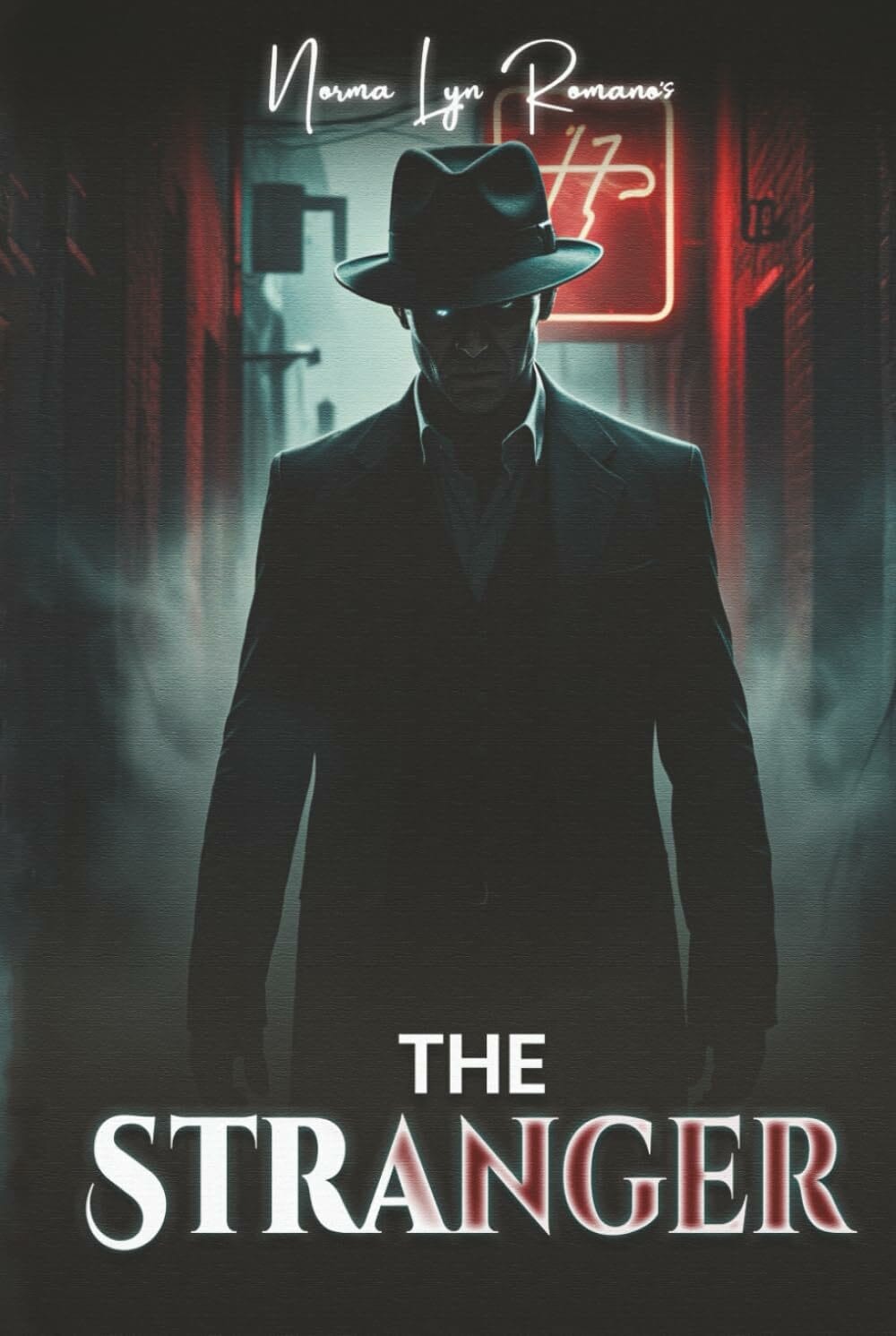From Boardrooms to Nightmares: A Spellbinding Leap into Supernatural Fiction
Norma Lyn Romano’s supernatural thriller blends Romanian folklore, psychological terror and authentic characters for a haunting debut novel experience

Most people spend their retirement years gardening or travelling. Norma Lyn Romano decided to unleash the nightmares living in her head onto unsuspecting readers. After decades in corporate life, this Charleston, New York resident swapped boardroom meetings for the far more thrilling business of terrifying strangers with her debut supernatural thriller, The Stranger.
What compels someone to abandon a stable corporate career for the unpredictable world of fiction writing? For many, it’s the chance to finally pursue a lifelong passion.
Career changes later in life often bring authentic experiences to writing that younger authors simply haven’t accumulated yet.
Romano’s corporate background provides her with a practical foundation that allows her the creative freedom to explore her fascination with the eerie and unexplained.
Romano’s debut centres on a deceptively quiet New York museum where ancient Romanian artifacts harbour secrets far more sinister than their historical significance suggests. When curator Dr. Evan Hughes inherits a collection after his mentor’s brutal murder in Romania, he unknowingly brings an ancient evil into his carefully ordered world.
The museum setting places Romano’s work within a rich literary tradition. Classic supernatural thrillers like Bram Stoker’s The Jewel of Seven Stars and M.R. James’ Ghost Stories of an Antiquary have long used museums and archaeological discoveries as gateways between our world and darker realms. What distinguishes Romano’s approach is her focus on the human cost of encountering the supernatural, rather than simply the mechanics of ancient curses.
Her Romanian artefacts aren’t mere plot devices – they’re vessels for a malevolent entity that feeds on life force whilst leaping from host to host. A mysterious compass reacts violently near sensitive individuals, whilst a cryptic chalice hints at rituals demanding blood sacrifice. Romano draws from Romania’s rich folklore tradition, particularly the Strigoi legend – shapeshifting undead spirits capable of turning into animals or fog. Romania’s mysterious cultural heritage provides perfect inspiration for her body-hopping entity.
Characters That Feel Real Even in Unreal Circumstances
Romano’s greatest strength lies in creating characters whose emotional responses feel authentic even when faced with impossible circumstances. Dr. Evan Hughes isn’t your typical academic hero – he’s a man whose professional curiosity puts everyone around him in danger. Scott, a museum worker whose traumatic past makes him particularly vulnerable to the entity’s influence, serves as more than just a supernatural conduit.
Perhaps most refreshingly, Charlene breaks the mould of the typical horror heroine. As the museum’s Public Relations Liaison, she could easily have been relegated to screaming in corners or providing romantic subplot distraction. Instead, Romano makes her an active problem-solver who dives into researching the enigmatic artefacts and provides crucial support to Scott during his harrowing ordeal. She’s neither helpless nor implausibly capable – just someone doing her best in an impossible situation.
Psychological Terror Over Jump Scares
Romano sidesteps the formulaic approach that plagues much contemporary horror. Rather than relying on cheap scares, she builds tension through unsettling details and psychological unease. The entity’s transatlantic journey, surviving within a dog’s crate whilst draining victims along the way, creates a sense of inevitable doom rather than sudden shock.
Her atmospheric approach aligns with contemporary supernatural fiction that prioritises psychological depth over gore. The horror comes from the gradual realisation that our rational world has room for ancient evils, and that ordinary people must somehow find the courage to confront forces they can barely comprehend.
The supernatural elements – gargoyles with glowing eyes, a vibrating compass, disturbing hallucinations – serve the story’s emotional core rather than existing for their own sake. Scott’s physical collapses and psychological torment feel grounded in real human vulnerability, making the supernatural threats more rather than less believable.
Turning Private Fears into Shared Terrors
Romano’s motivation for writing comes from a deeply personal place. She aims to bring ‘the unsettling thoughts and nightmares living in her head to life for readers’ – a goal that speaks to horror fiction’s fundamental appeal. The genre allows us to safely experience our deepest fears whilst knowing we can close the book and return to safety.
Her Charleston location may seem an unlikely breeding ground for Romanian supernatural fiction, but writers often find that stable life circumstances provide the perfect foundation for exploring darker imaginative territories. Romano’s corporate experience likely provided her with the discipline and project management skills necessary to complete a novel, whilst her retirement gives her the freedom to pursue subjects that genuinely fascinate her.
A Book for Readers Who Like Their Scares to Linger
This isn’t a book for readers seeking quick thrills or formulaic supernatural romance. Romano writes for people who appreciate stories that burrow under your skin and stay there. If you’re someone who double-checks dark corners before bed or finds yourself thinking about creepy stories days after finishing them, The Stranger might be exactly what you’re looking for.
The novel promises to deliver what Romano describes as consequences that will have ‘readers questioning every creak in the night long after turning the final page’. It’s designed for those who enjoy the slow build of dread, the psychological complexity of characters under extreme stress, and supernatural horror that feels uncomfortably plausible.
Cursed artefact stories have fascinated readers for generations because they tap into our fear that some things are better left undisturbed. Romano’s take on this ancient fear feels fresh because she grounds it in recognisably human emotions and relationships.
The Delight of Being Deliciously Unsettled
Romano’s debut represents something increasingly rare – a genuinely new voice in supernatural fiction. She brings the kind of life experience and authentic fear that can’t be manufactured, only lived. Her journey from corporate professional to novelist reminds us that the best horror stories often come from the most unexpected places.
For readers tired of predictable supernatural fiction, discovering an author who can genuinely unsettle you is a rare pleasure. Romano’s ability to blend ancient folklore with modern settings, psychological realism with otherworldly horror, and authentic character development with spine-tingling atmosphere marks her as someone worth watching.
The Stranger offers the particular satisfaction that comes from being frightened by someone who clearly knows how to craft a story that lingers. Romano’s nightmares have found their perfect home on the page, and readers brave enough to share them are in for a treat of the most unsettling kind.






